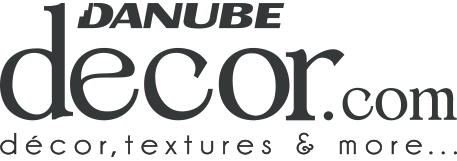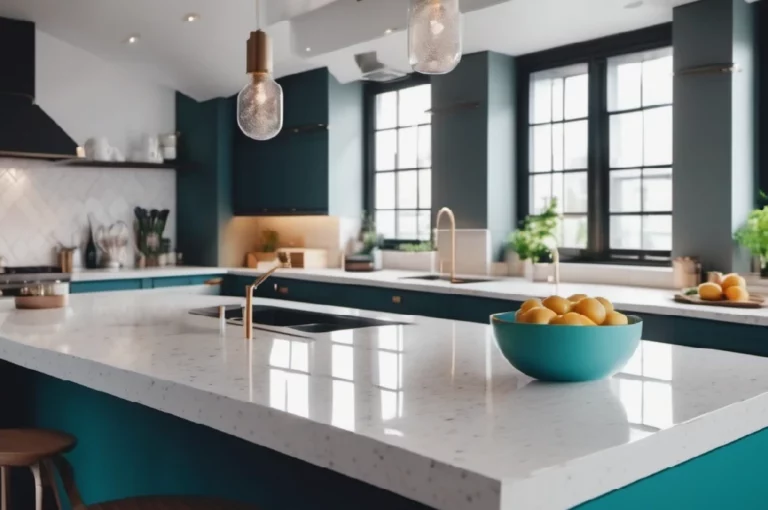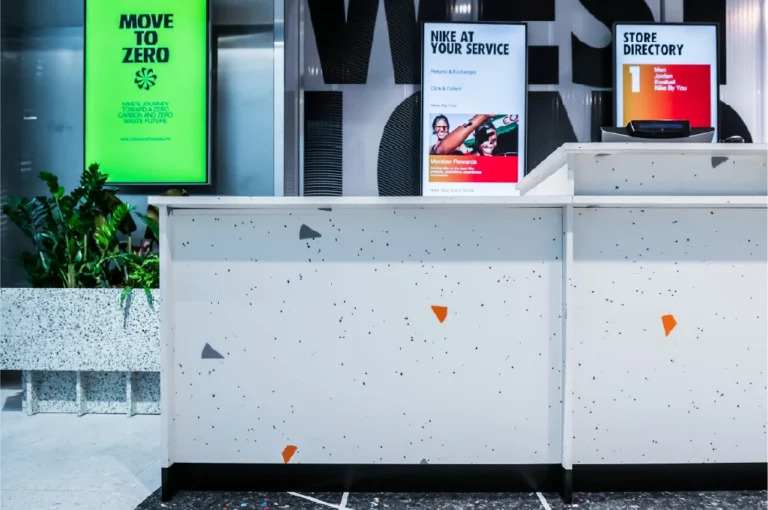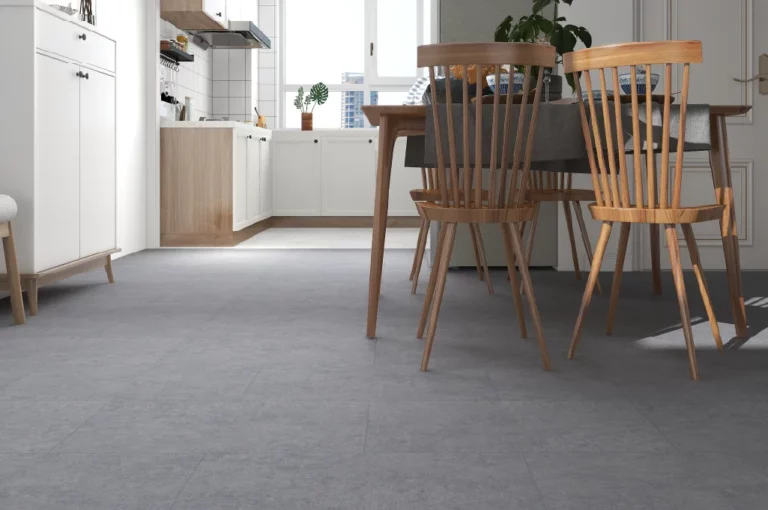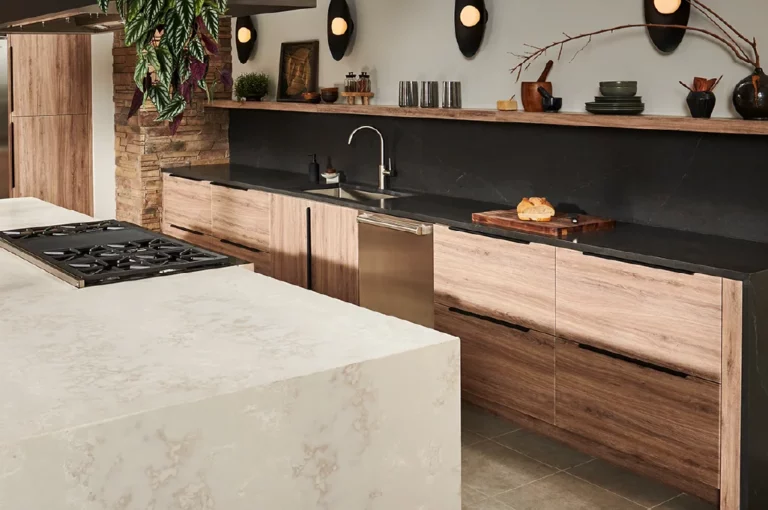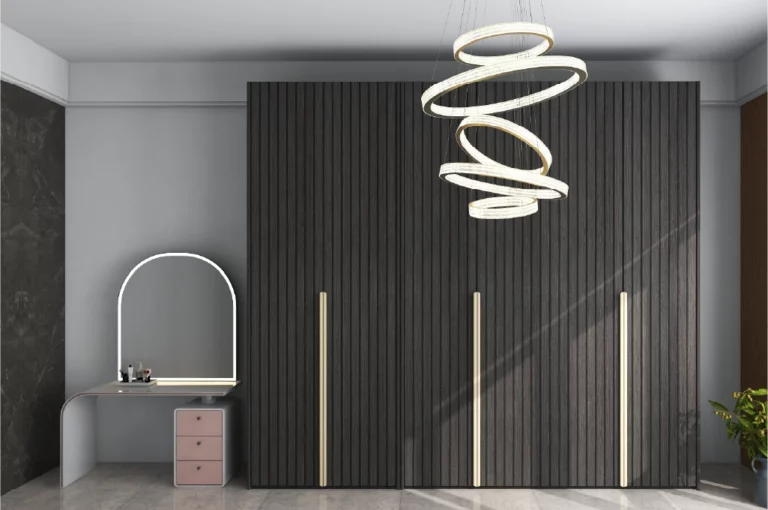MDF vs Synchro Board: Which Board Is Right for Your Interiors?
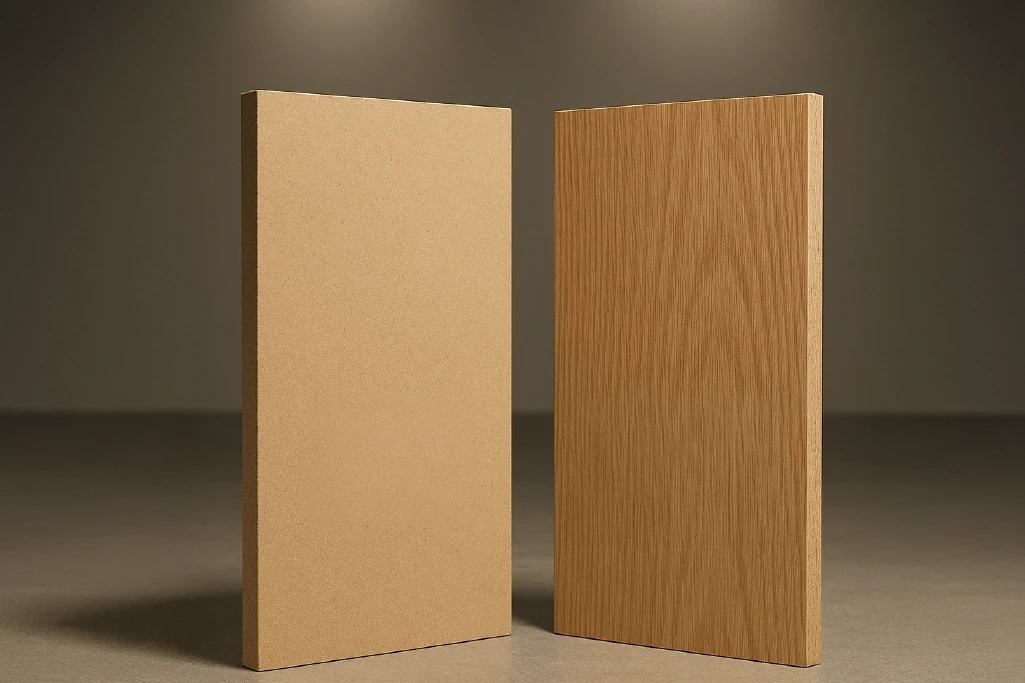
Interior design is an intricate process which demands accurate selection of the construction and decorative materials. Your choice of material will dictate the finish, style, and appeal of the living space. Two common options are MDF and synchro board.
While both are types of engineered wood, they offer very different finishes and functionalities. Let’s break down the differences to help you decide which one suits your interiors better.
Plain but Powerful: The Strengths of Regular MDF
MDF, or Medium-Density Fibreboard, is a popular material made by compressing wood fibres with resin to form a solid, flat panel. You’ve probably seen it in everything from shelves to painted cabinets. Why do people use MDF?
- It provides a smooth surface for painting or adding laminates.
- It is easy to cut and shape, making it suitable for customised furniture.
- It’s affordable and ideal for structural elements or base panels
For example, if you’re creating a bookshelf that will be painted or layered with a decorative laminate, an MDF board is more than enough. It does the job without breaking the bank.
When Looks Matter More: What Synchro Board Offers
Now, let’s look at the more advanced option, i.e. the synchro board. Also called a synchro MDF board, it’s essentially MDF enhanced with synchronised printing technology. That means the grain texture you feel is exactly aligned with the wood pattern you see. The result? A surface that looks and feels like real wood.
Key benefits of using a synchro MDF board:
- It comes with pre-finished surfaces such as paper veneer, melamine, or natural wood veneer.
- It saves time and cost by skipping the need for extra layers or paint.
- It gives interiors a premium, high-end appearance without using actual hardwood.
Think about a wardrobe with oak-textured doors that feel just like real wood when you touch them [that’s the charm of a synchro board].
MDF vs Synchro Board Comparison
Here’s a quick look at how these boards stack up in everyday applications:
| Features | MDF | Synchro MDF |
|---|---|---|
| Visual Appeal | Plain and smooth, needs surface finishing | Textured and realistic, ready to install |
| Cost | Budget – Friendly | Slightly higher, but with a decorative finish included |
| Durability | Durable, but may need sealing | Scratch- Resistant and easier to maintain |
| Usage Case Examples | Painted bookshelves, internal cabinet structures | Decorative wall panels, visible furniture fronts. |
Choosing the Right One for Your Home
So, which should you choose? MDF or synchro board? It depends on how and where you’ll use it.
- If the surface will be painted, covered, or hidden behind doors, MDF is a practical and economical option.
- If the board will be exposed and you want it to look elegant and realistic, go with a synchro MDF board.
Moreover, consider the requirements of the area. For example:
- In a kitchen, a synchro board with a melamine layer resists stains and is easier to clean.
- In a bedroom, MDF works well for inner structures of wardrobes or drawers that will be covered with laminate or veneer.
Final Thoughts
Both MDF and synchro boards have earned their place in modern interior design. While MDF is all about versatility and value, the Synchro MDF board brings in style with smart functionality. Knowing what each board does best helps you create interiors that are not only attractive but also practical for everyday life.
Take a moment to think about where you’ll use these boards. A smart material choice now can make your interiors easier to maintain and better to live in for years to come.
